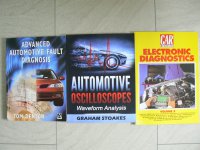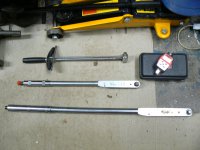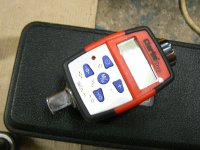Whilst I was pulling those books out of my tech books bookcase I thought this might interest those of you trying to get more deeply into electronic diagnostics. I'm still pretty low down on the learning curve myself but the more I "piddle" about with it all the more I realize how valuable it is to be able to graph outputs.
Those of us with MES (I also have VCDS for my VAG stuff) are spoilt here because MES allows graphing. The only problem is that using a scanner via the OBD port is showing you what the computer thinks is going on - so, sensor and it's wiring and it's connector(s) and anything else in that circuit so I've lately become very interested in Oscilloscopes because they allow you to break into a circuit and take readings at specific points which is much more useful.
When you start getting into this it doesn't take long to dawn on you that whatever you are using to produce the graph, it's only any use to you if you know what to look for and a large part of that is knowing what a healthy output from the component you are studying actually should look like.
So how about these:

Tom Denton's book I bought a few years ago and I refer to it a lot - you'll find it in a lot of public libraries.
Don't "sneer" at the Car mechanics booklet. It's one in a series they do and is a collection of some of the diagnostic features they do in every issue and contains tons of model specific detail (I bought this one because it has a 1.2 Punto in it and some VAG and Vauxhall stuff too). My latest indulgence is Graham Stoakes book on waveform analysis. I blew all my Christmas money on it and it hasn't failed to thrill! It's been the best so far by a long shot.
If you haven't tried a copy of Car Mechanics Magazine I would encourage you to give it a go. Those tech subjects towards the back of every issue are fascinating and very useful.
Those of us with MES (I also have VCDS for my VAG stuff) are spoilt here because MES allows graphing. The only problem is that using a scanner via the OBD port is showing you what the computer thinks is going on - so, sensor and it's wiring and it's connector(s) and anything else in that circuit so I've lately become very interested in Oscilloscopes because they allow you to break into a circuit and take readings at specific points which is much more useful.
When you start getting into this it doesn't take long to dawn on you that whatever you are using to produce the graph, it's only any use to you if you know what to look for and a large part of that is knowing what a healthy output from the component you are studying actually should look like.
So how about these:

Tom Denton's book I bought a few years ago and I refer to it a lot - you'll find it in a lot of public libraries.
Don't "sneer" at the Car mechanics booklet. It's one in a series they do and is a collection of some of the diagnostic features they do in every issue and contains tons of model specific detail (I bought this one because it has a 1.2 Punto in it and some VAG and Vauxhall stuff too). My latest indulgence is Graham Stoakes book on waveform analysis. I blew all my Christmas money on it and it hasn't failed to thrill! It's been the best so far by a long shot.
If you haven't tried a copy of Car Mechanics Magazine I would encourage you to give it a go. Those tech subjects towards the back of every issue are fascinating and very useful.



